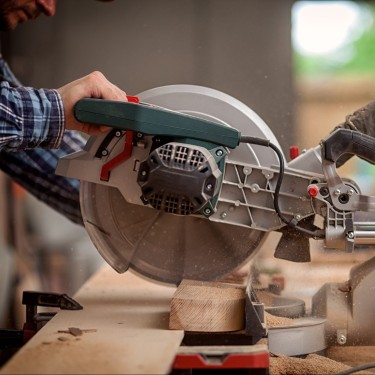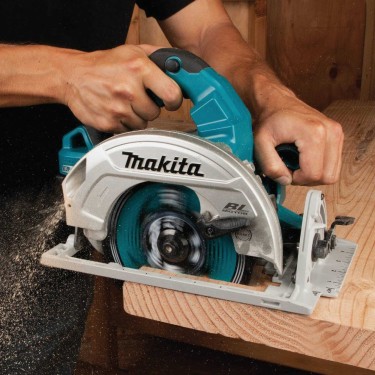A band saw is a versatile, powerful tool. If you're thinking about adding one to your shop, here's a list of great options to consider.
Every editorial product is independently selected, though we may be compensated or receive an affiliate commission if you buy something through our links. Ratings and prices are accurate and items are in stock as of time of publication.
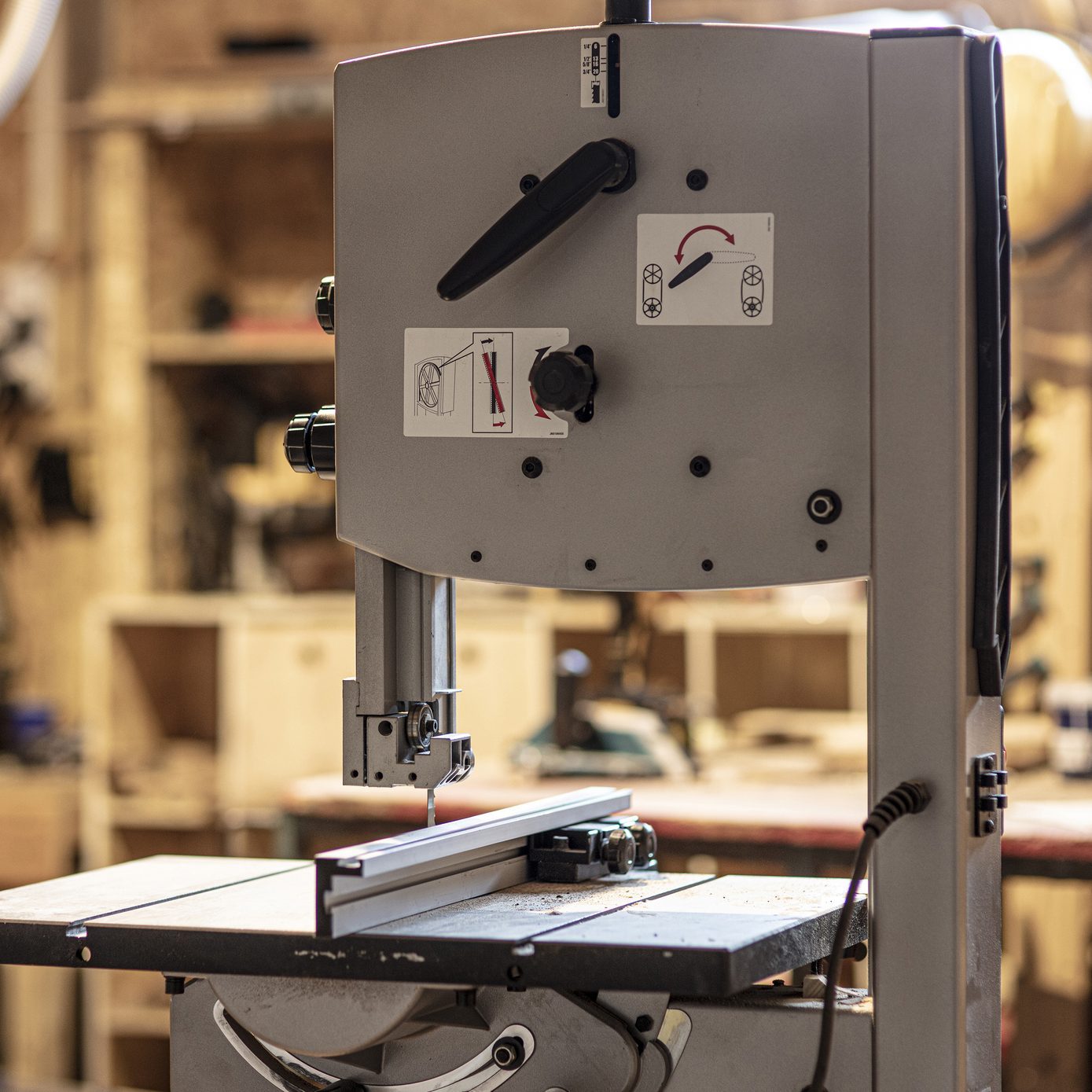
Buying a Band Saw
Band saws are amazingly versatile tools. They’re primarily used for making curved cuts, resawing boards and ripping rough material. They’re also relatively free of kickback because the blade only moves downward, not out toward the user like the blade on a table saw.
Band saws can cut wood, metal and other materials, but they’re most often found in woodworking. Here, we’ll look at great band saws in several sizes and designs.
Some key considerations when choosing a band saw:
- Throat depth. This is the saw’s cutting width, which is how band saws are described. So a 14-inch band saw has about 14 inches of throat depth. (The actual measurement will be smaller, like the way a 2×4 isn’t actually two by four inches.) Throat depth is the distance from blade to column. Bench-top band saws generally have about a foot of throat depth, while standing saws allow wider material to pass through. If you’re cutting curves, that extra space gives you more room to maneuver material.
- Vertical capacity. This measures the saw’s cutting height. It’s the key measure if you’ll be resawing boards into smaller thicknesses.
- Motor power. Smaller bench-top saws don’t always advertise their horsepower (hp). But if they do, 1/2- to 1-hp is plenty for hobbyists. You want 1- to 1-1/2 hp for resawing. A band saw with 2-hp or more is suitable for serious woodworking, but will likely need a 220-volt electrical supply.
- Frame. Traditionally these are cast iron, but steel frames allow for a higher vertical capacity. Cast iron frames often have seams. (We’re primarily talking about vertical band saws here, plus some hand-held models. Horizontal band saws are distinct enough to be a separate topic.)
- Table size. Tables support the cutting material. Some DIYers prefer a wider surface, while others like to be right on top of the work. Some tables also tilt on one or more directions, allowing for easier angled cuts. Portable band saws don’t have tables at all.
- Blades. Like every saw, a band saw is only as good as the blade. Less expensive models often come with a lower quality blade, so you may want to upgrade right away. Pros keep multiple blades on hand to save time and material, while DIYers tend to keep a more limited selection of blades. The best width depends on the usage. If you’re doing a lot of curvy, delicate work, a narrow blade is best; many DIYers like a 1/4-in. blade. Greater width provides more stability for steady straight cuts, often a 3/4-in. blade or greater. A half-inch blade is a good compromise. As with most other types of saw blades, a higher tooth count provides a smoother but potentially slower cut. Manufacturers describe band saw blades by teeth per inch (tpi) rather than full tooth count. Bi-metal blades can cut wood, but are often used for metal.
- Price. This varies with size and quality. Bench top models range from $175 to $1,000 while freestanding floor saws start at around $1,000 and go up to $5,000 or more. A portable band saw is only $100 to $400. Our list includes a few great buys at several price.
- Overall size. We cover four sizes of band saws in this list. Floor-standing saws are the most capable models, but also the most expensive and heaviest; some floor-standing band saws weigh well over 500 pounds. Stand-mounted band saws are about two-thirds the size of floor-standing models, using a small stand to bring their work table to the proper height. Stand-mounted saws tend to have smaller specs and be less powerful than floor-standing saws, but they’re lighter and more affordable. Bench-top models are the most popular with DIYers looking to balance price, size and performance. These range from 75 to 300 lbs. and usually have a smaller throat size and vertical cutting capacity than floor-standing or stand-mounted saws. Portable band saws are lightweight handheld tools, available in corded and cordless models. Notably, portable band saws lack an integrated table to support the work material.
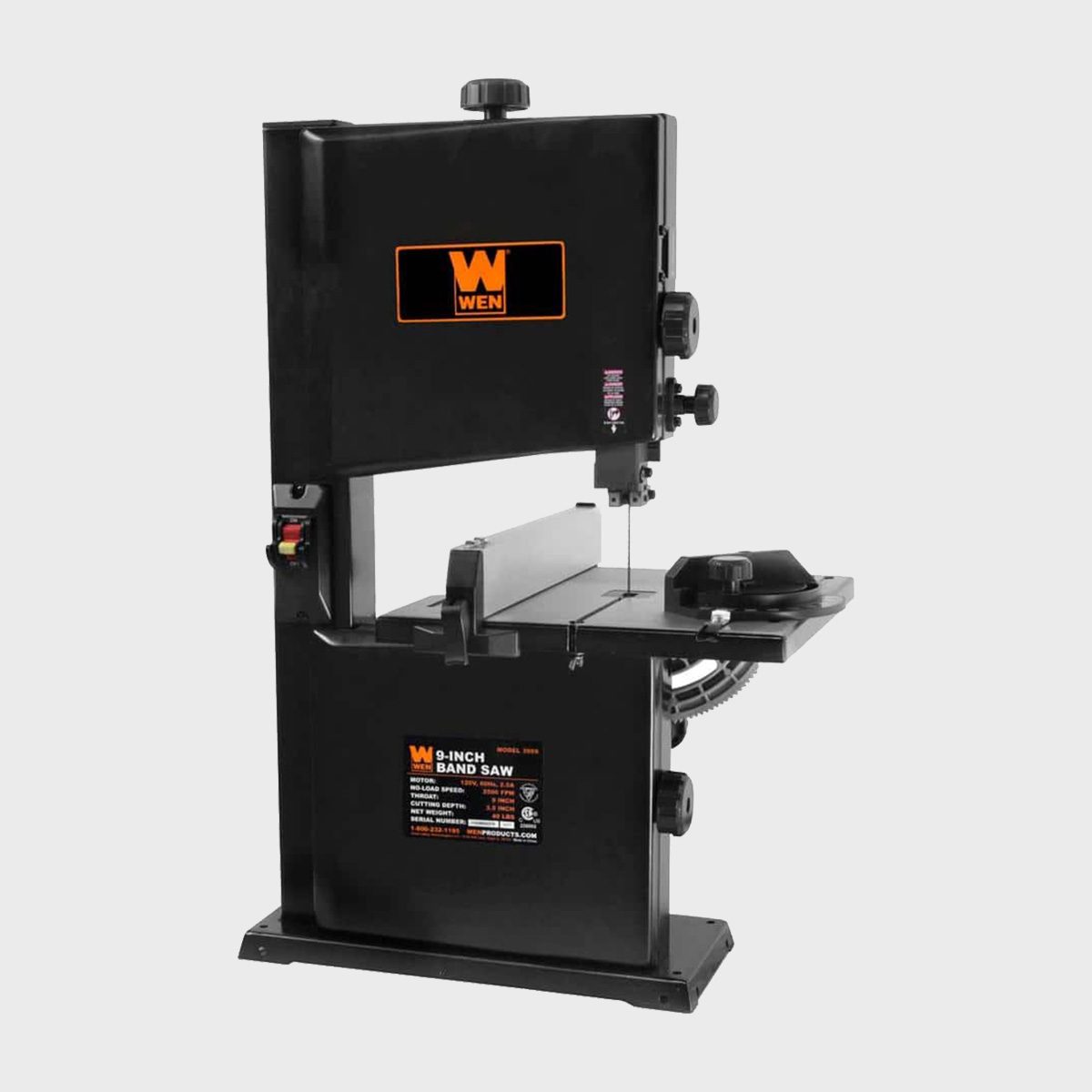
Best Budget Bench Band Saw
If you’re on a tight budget with modest sawing needs, the Wen 3959T Band Saw is a good choice. It offers a 9-in. throat depth and 3-1/2-in. vertical capacity, powered by a 1/3-hp, 2.5-amp motor. It ships with a 1/4-in. blade and can accept blade widths up to 3/8-inch.
It doesn’t have the blade width or vertical capacity to handle resawning boards, but it’s a strong choice if you’re making curved cuts in thinner material. And the price ($163) is outstanding.
We do like that the work table is larger than most other 9-in. bench saws at 12-1/4 in. x 11-7/8 in., and it can be beveled to 45 degrees. This band saw features a single 2-1/2-in. dust port, and it’s backed by a two-year warranty.
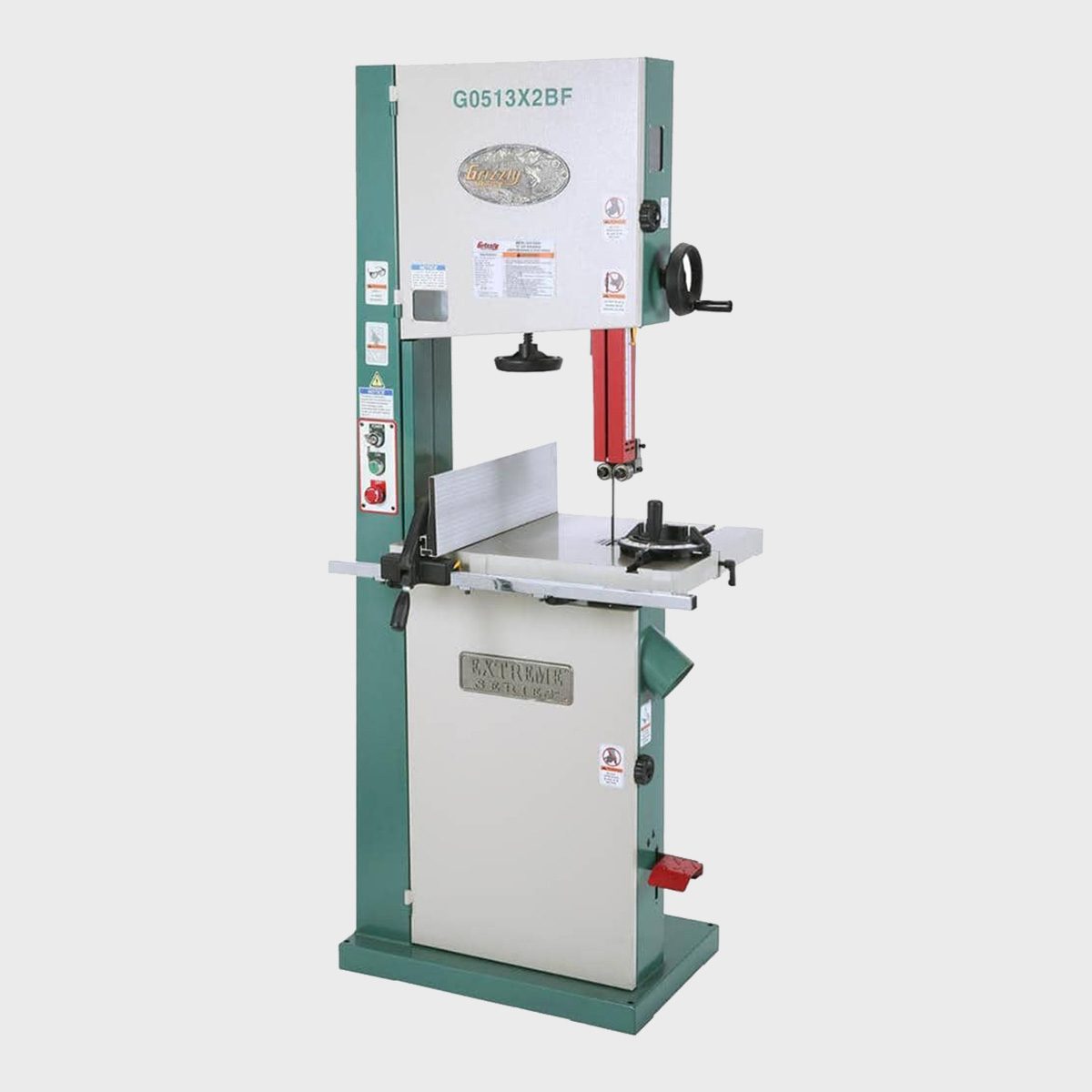
Best Band Saw Splurge
Grizzly makes great band saws, but they’re not for the casual user. If you’re making furniture and selling your custom pieces, or if you have a deep passion for woodworking, go for the Grizzly G0513X2BF Band Saw. But at $2,395, it’s not an impulse buy.
This saw lives up to the Grizzly name with a 16-1/4-in. throat depth, 12-in. vertical capacity and 2-hp motor. It requires a 220-volt electrical supply.
It also features a blade brake, spinning it down to a full stop in three seconds, and foot pedal controls so you can keep both hands on the cutting material while powering up and stopping the blade. It offers a pair of 4-in. dust extraction ports and a table size of 23-5/8 in. x 17-1/4 in., with a tilt of five degrees left and 45 degrees right.
You can buy a much more expensive band saw. But for most DIYers, this is everything you’ll need and then some.
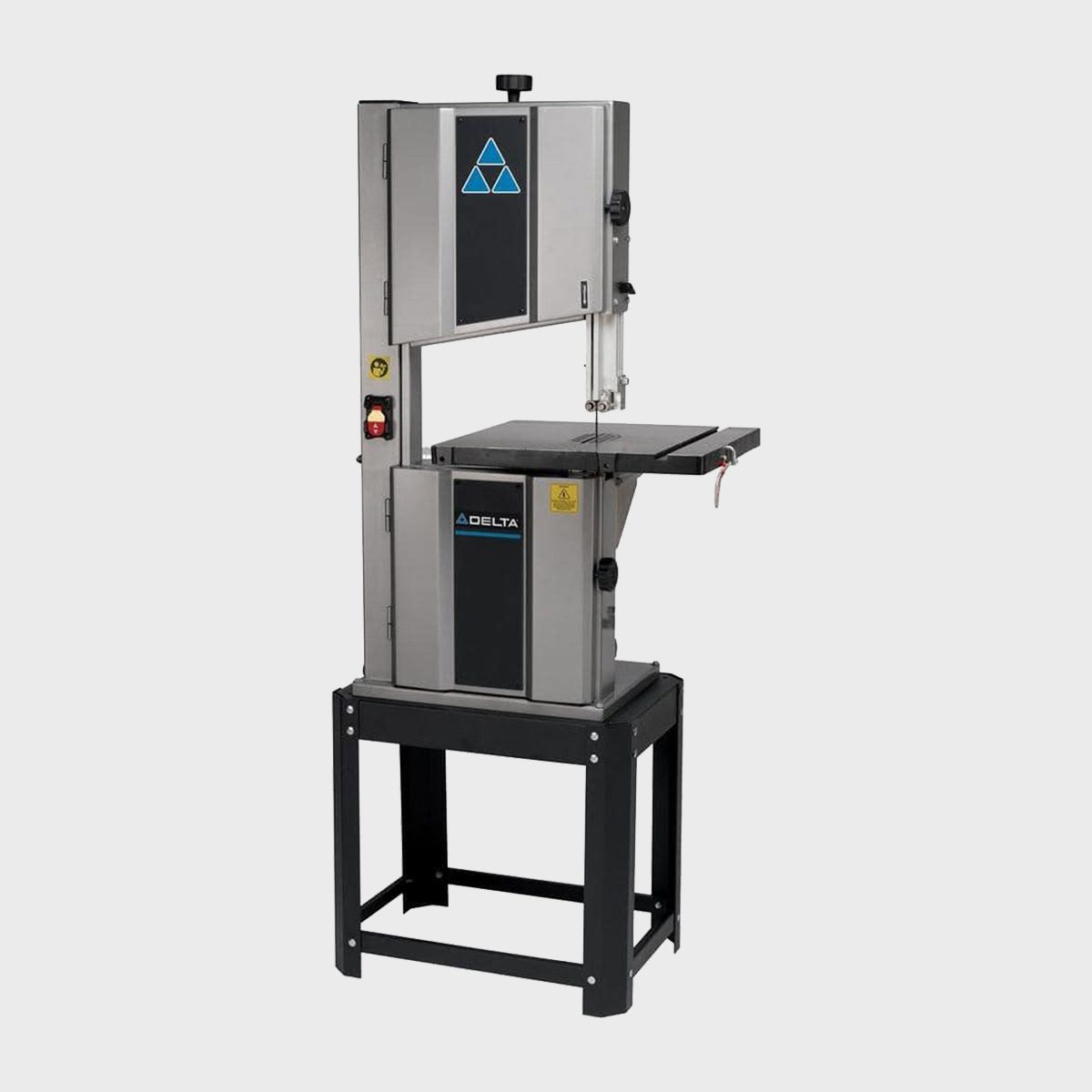
Most Versatile Bench Band Saw
While it makes sense for pros to invest money in highly-specialized tools, DIYers are often better served by multipurpose tools. The 14-in. stand-mounted Delta 28-400 Band Saw provides users with multiple ways to tackle a project.
The two-speed selector lets you cut materials with the proper amount of aggressiveness, while the dual-voltage motor can be wired for a standard 110-volt or 220-volt outlet. The latter, combined with the bench top format, makes this a smart call for renters, because it can be tough to find a rental with 220-volt outlets.
The Delta 28-400 offers a steel frame body, 13-5/8-in. throat depth, 6-in. vertical clearance, a 4-in. dust port and a 15-3/4-in. x 18-7/8-in. cast iron table. It’s covered by a five-year limited warranty.
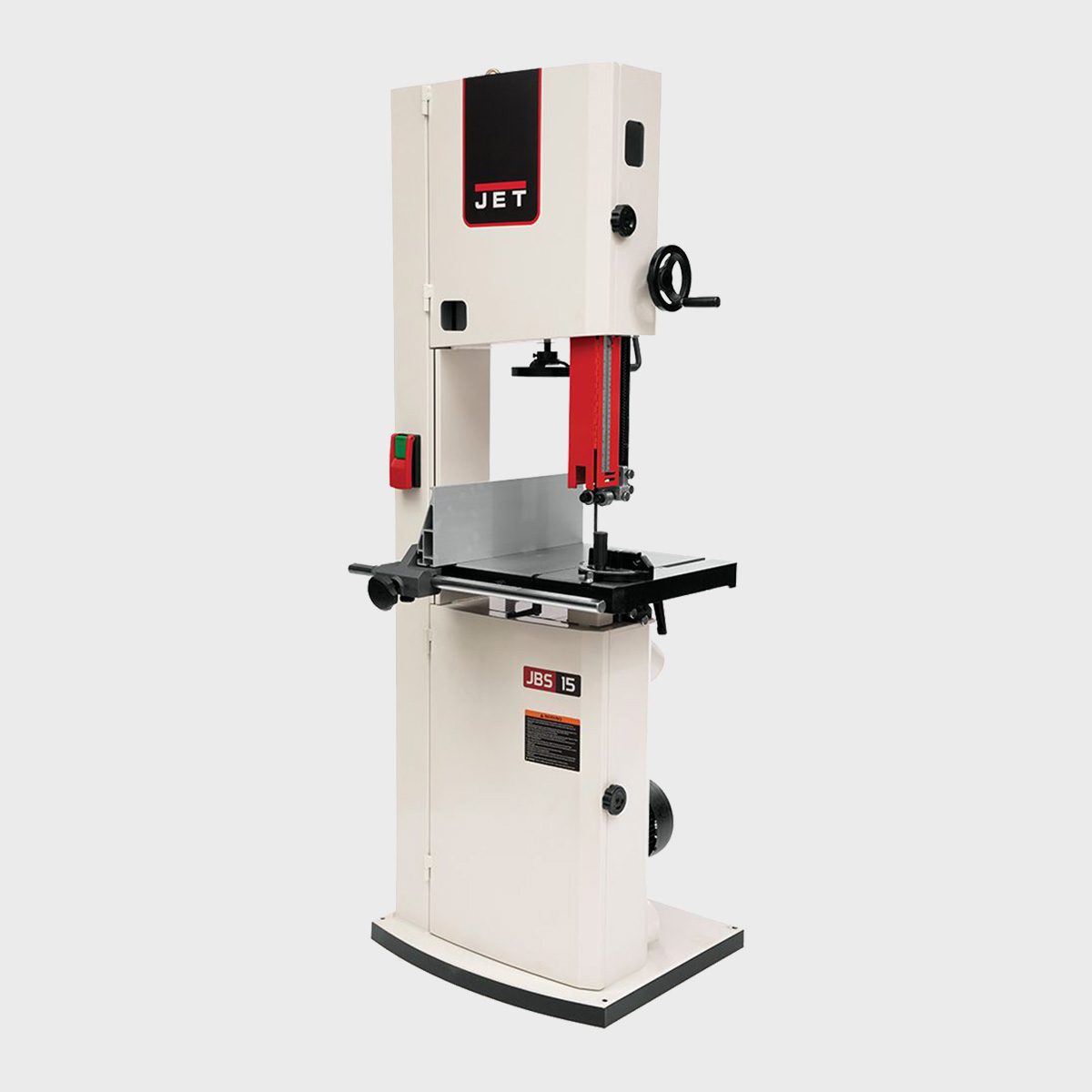
Most Versatile Floor-Standing Band Saw
The Jet JWBS-15 15-in. Band Saw works for DIYers who value versatility, especially for those who might be moving their shop in the future. The Jet’s steel frame makes it much lighter and easier to move than cast iron, although at 382 lbs. it won’t vibrate around your shop every time you turn it on.
The dual-voltage motor means it can function in DIY shops without a 220-volt outlet. However, the 1-3/4-hp motor will draw a hefty 15 amps from a 110-volt outlet, so you’ve got two choices: Install a dedicated breaker, or don’t run anything else while you operate the saw.
It offers a 14-in. vertical capacity with 14-1/8-in. throat depth. The 21-1/2-in. x 16-in. cast iron table tilts five degrees left and 45 degrees right. It can mount saw blades from 1/8- to 1-in. wide, and comes with dual 4-in. dust ports to help keep the sawdust manageable.
One feature we particularly like: The viewing window, making it easy to see the blade respond during tracking adjustments.
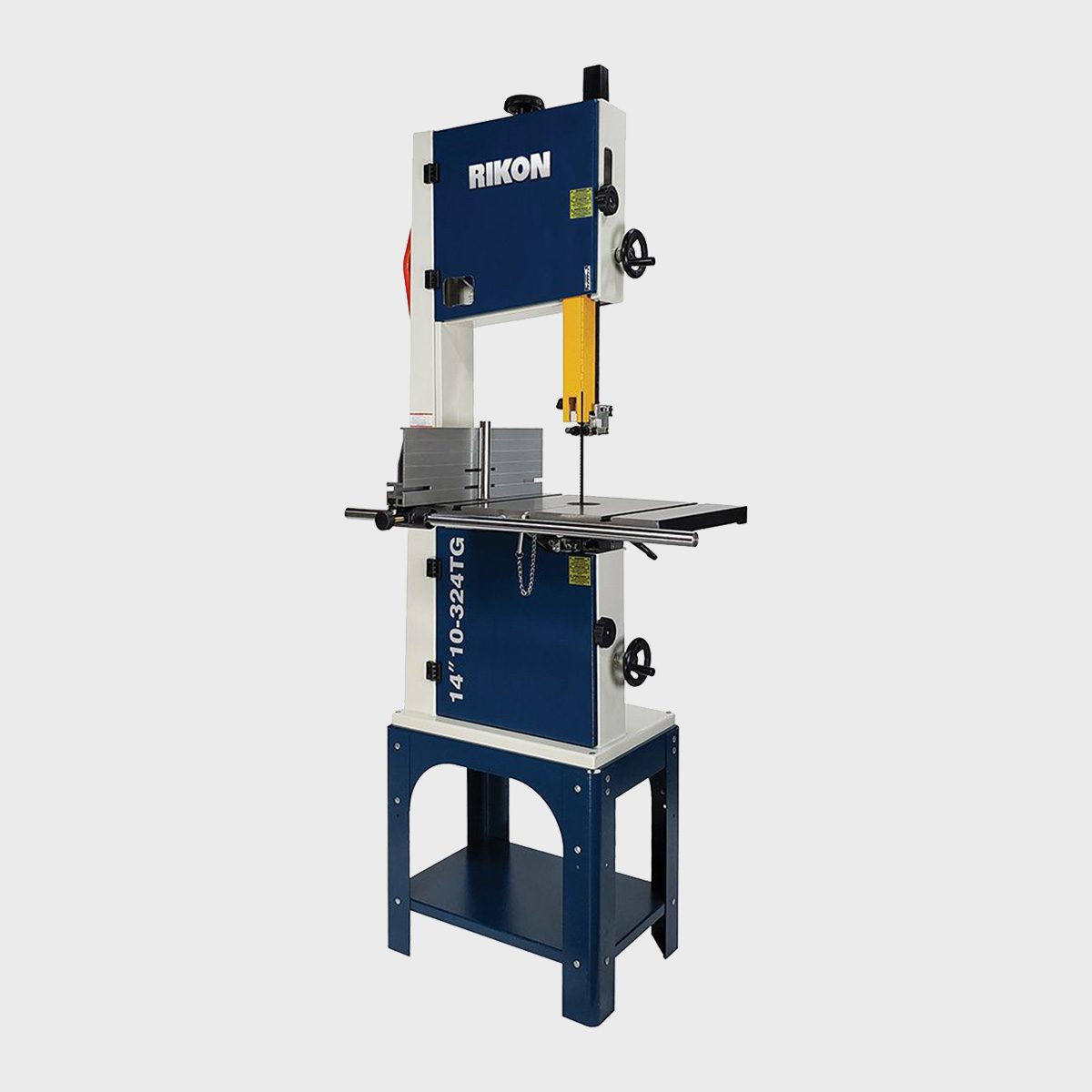
Best Stand-Mounted Band Saw for Resawing Boards
While lots of floor-standing saws offer a high vertical capacity, the Rikon 10-324TG 14-in. Band Saw stands out in the more affordable stand-mounted category.
With a 13-in. vertical clearance, this is great for stretching out your supply of expensive boards. Even better, it comes with a 6-in.-tall resaw fence and a resaw bar. (A resaw or drift bar support boards and compensates for blade drift.)
We love its 110-volt outlet for accessories, along with its sight window, dual-voltage motor and two-tier speed to suit whatever materials you’re working with. The 21-1/2-in. x 15-3/4-in. table tilts five degrees left and 45 degrees right. It has a single 4-in. dust port and accepts blades from 3/16-in. to 3/4-in. wide.
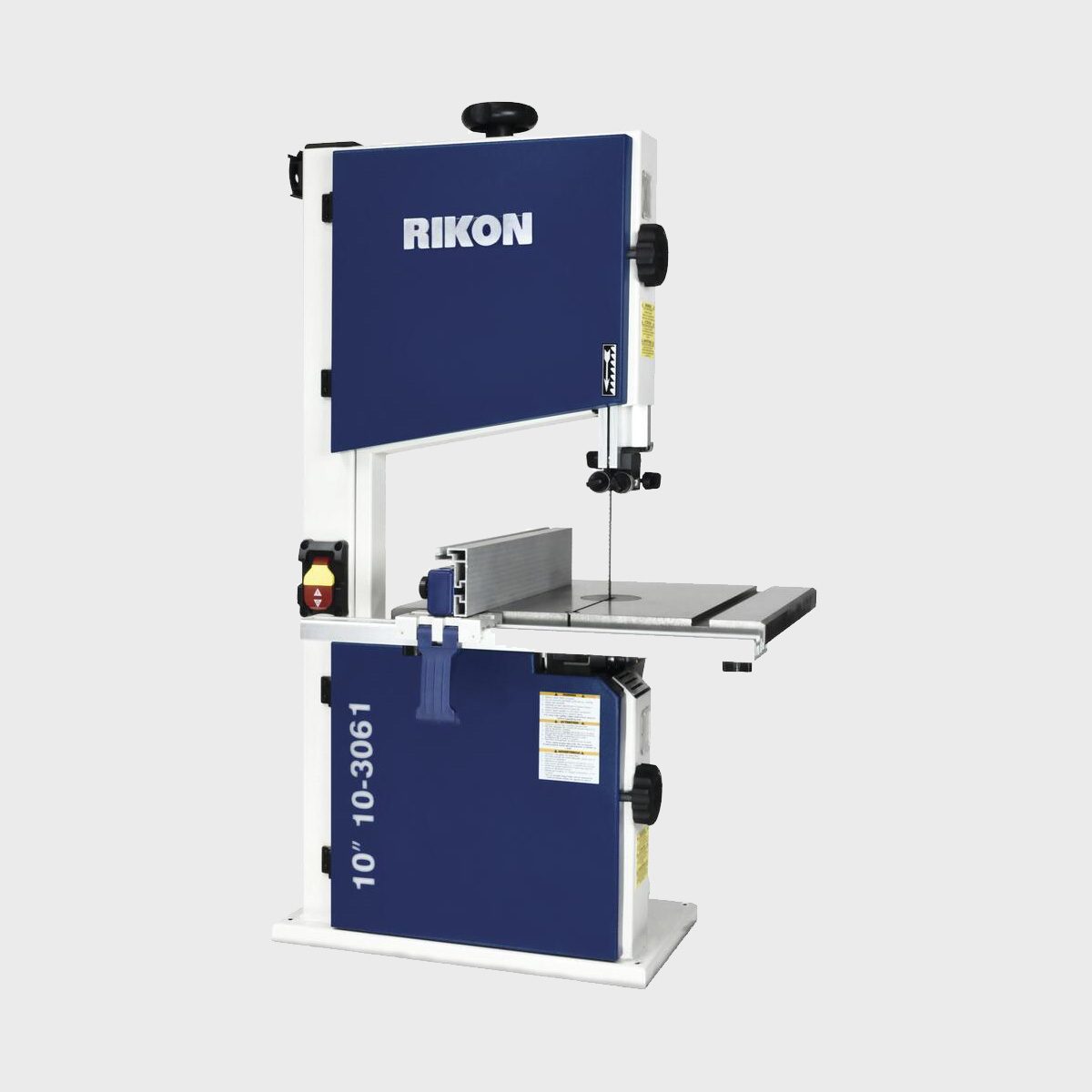
Best Bench Band Saw for All Around Value
We love the Rikon 10-3061 Band Saw. It’s got less vertical capacity than the 10-324TG above. But if you don’t plan on resawing wide material, this slightly smaller band saw is a great deal.
It has a 5-in. vertical capacity compared to the 10-324TG’s 13-in., but it costs about 50 percent less. Sure, it’s pricey for a bench top. But the power and features make it worth the money.
This is an upgrade to Rikon’s previous 10-in. model, the 10-306. Like its more costly counterpart, this saw offers two speeds. The 2-1/2-in. dust port tilts upward, making it easier to connect and disconnect hoses in a small shop. It has a pair of viewing windows and takes up to a 1/2-in. blade. The 13-3/4-in. x 12-1/2-in. table tilts five degrees left and 45 degrees right.
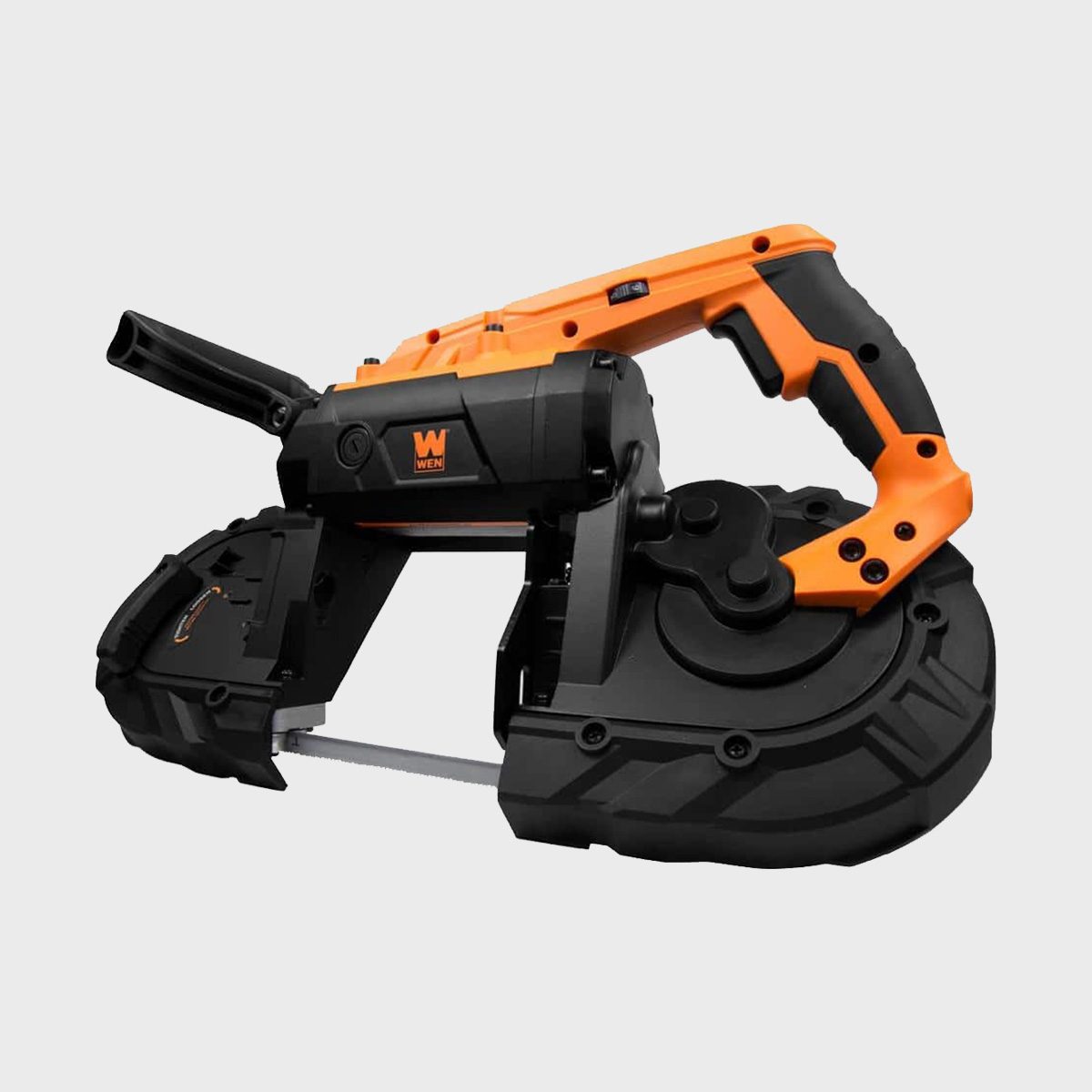
Best Corded Portable Band Saw
We’ve saved portable band saws for last because they’re so different from bench and floor-standing band saws.
Often used to cut metal or PVC at a jobsite, these saws can also cut almost any material with the right blade, especially curves and straight flush cuts. Instead of throat depth and vertical clearance, portable band saws describe cut depth (blade to saw frame) and cut width (end to end of the exposed blade).
For dependable cutting and good battery life, the Wen 94396 10-amp Band Saw provides portability and power. And at $91, it’s the lowest-priced tool on this list.
With a 5-in. depth and 5-in. cut width, it has one of the largest cutting capacities on the market. The variable speed dial lets you select a blade speed between 60 and 420 feet per minute so you can find the right cutting speed for the material at hand. This saw ships with a 1/2-in. blade, and it’s backed by a two-year warranty.
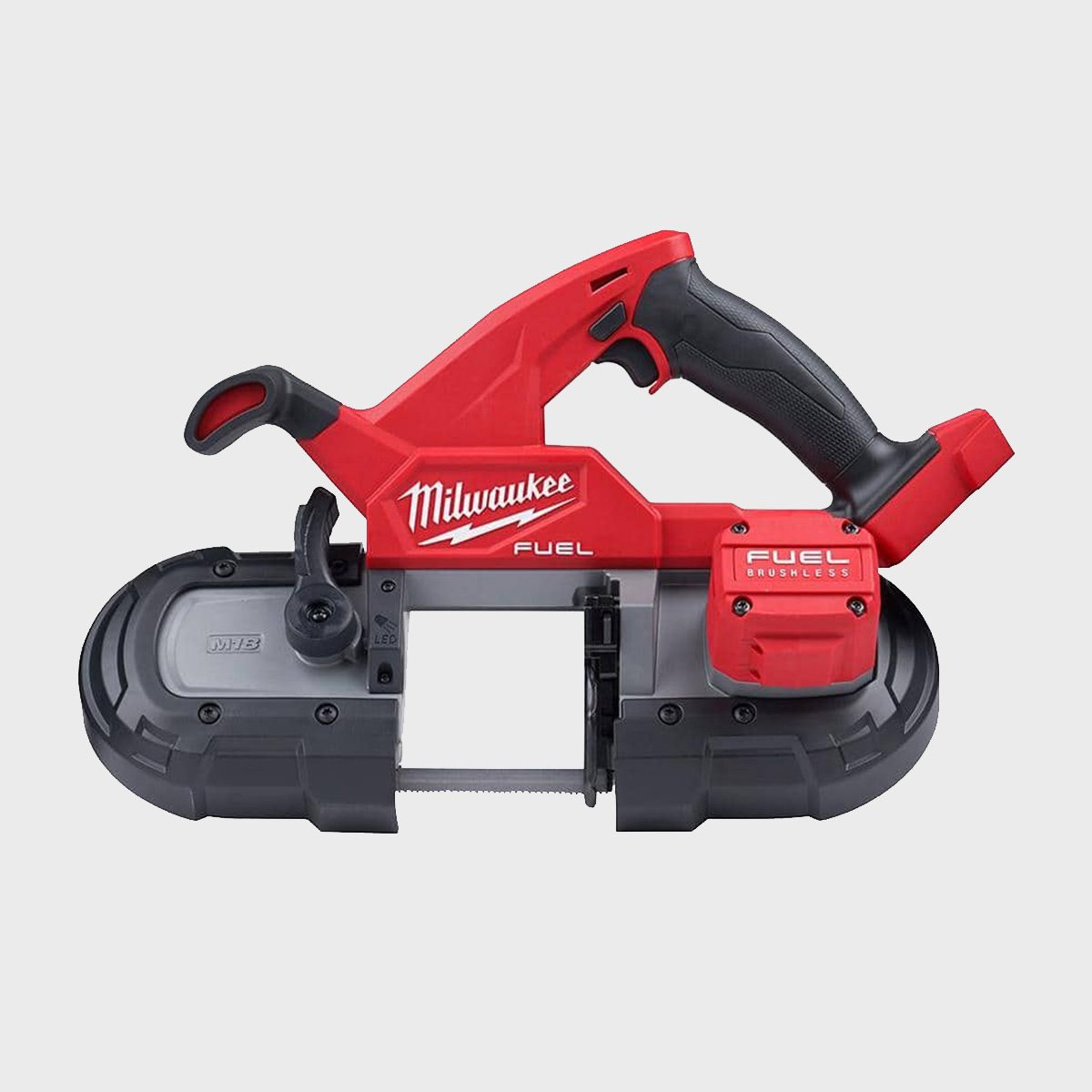
Best Cordless Portable Band Saw
For the ultimate in portable band saws, choose a cordless. The Milwaukee M18 Compact Band Saw offers a 3-1/4-in. x 3-1/4-in. cutting capacity, and the brushless motor features trigger-controlled variable speed.
Milwaukee’s “Jobsite Armor Technology” protect the tool’s mechanisms from the rough and tumble reality of jobsite use, and the integrated rafter hook allows for easy storage. Plus, this band saw is compatible with more than 200 tools in the M18 system. So if you’ve already invested in an M18 battery and charger, you’re all set.

